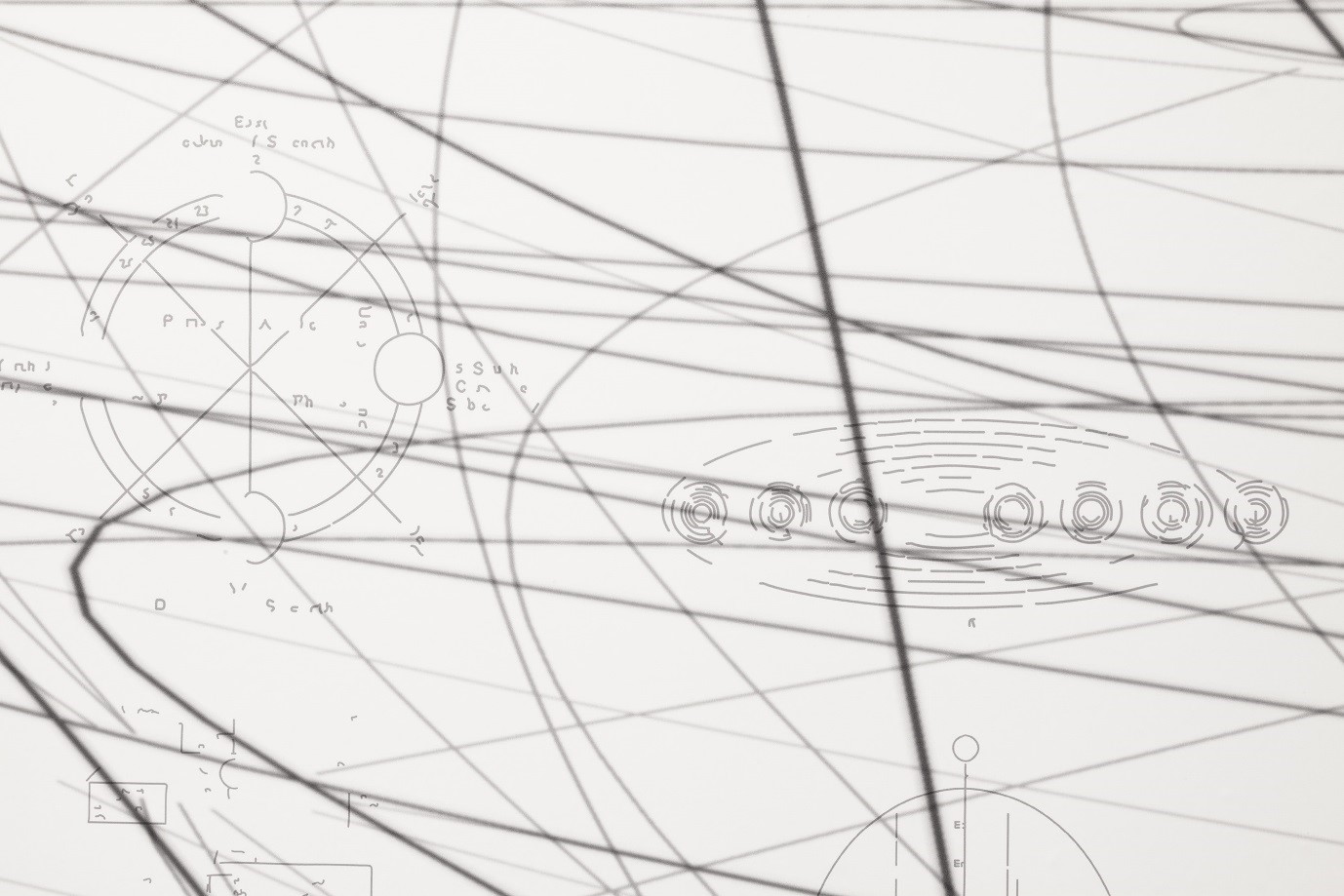A History of Drawing surveys the practice and teaching of drawing at Camberwell College of Arts over an eighty year period. Featuring the work of over sixty artists, this exhibition celebrates Camberwell’s past, and will shape making and critical debates about drawing for the future.
Throughout Camberwell’s history, the definition of drawing has expanded; from lines on paper to 3D and digital space. The exhibition is characterised by an outward-looking approach as artists have increasingly explored drawing’s uses in fields beyond that of fine art, incorporating new technologies, politics and science. The works in the show include medical illustration, drawing machines, and moving image works, exploring a wide range of issues pertinent to our globally shared present
The exhibition includes work by historical artists such as Edward Ardizzone, David Hepher and R.B. Kitaj, to recent graduates including Izat Arif, Adam Farah and Jennifer N. R. Smith. The exhibition also features a new large-scale vinyl drawing ‘The Temptation of the Diagram’ by Matthew Ritchie.

Jennifer N. R. Smith, Flow Study II, 2017, collage, hand marbled paper, grid paper, charcoal and ink
Since graduating in 2015, Jennifer N R Smith co-founded artist collective Perhaps? with fellow drawing graduates and now has a practice as both a fine artist and an illustrator; predominately making editorial illustrations for science articles. She is currently doing a postgraduate course in Medical Illustration with the Medical Artist’s Education Trust, and was recently a recipient for the 2017 Whitaker Award of Excellence. She is showing two works in the exhibition. The first is ‘Flow study II’ which is from a body of self-initiated work inspired by the aesthetic of topographical diagrams and fluid dynamics, abstract marks were made by hand marbling, collage and frottage, and were then analysed and given form by drawing techniques used in technical drawing and scientific illustration. The second work is ‘Rabbit: Skeletal Structure’, a Zoological Study made from taxidermy specimens at the Horniman Museum, London.
Another recent graduate, Adam Farah, is showing a piece that is part of a series of drawings on stretched latex titled ‘Cruis[IN] Portals’, 2014-2017. This series seeks to illustrate moments within their research into practices of cruising and queer speculative fictions or fantasy, utilising and repurposing both means as tools in the broad effort to ‘decolonize’ desires and human relations. Since graduating in 2014 they have sought further modes of alternative education, this year taking part in the ‘Holding Space’ Artist Associates Programme at The Showroom (London), and also recently became the seventh recipient of the South London Gallery Post-Graduate Residency for 2017/18.

Adam Farah, Cruis[IN] Portal (Dreamlover) II, 2015, medical red rubber latex, wood frame, paint marker pens, brass hooks
Tim Ellis currently teaches on BA Drawing and Foundation Sculpture at Camberwell. He supports and helps students to develop individual art practices through seminars, critiques and tutorials. It is important to ensure students are confident conceptual and practical makers that understand the value of experimentation and critical thinking. Tim is showing his work ‘Eraser’, part of a series of generative works that explore ‘Metamechanics’. The series encompasses astronomy, science, mathematics, cycles and systems that all materially and formally hark to an age of discovery. This particular machine was devised so that its form and aesthetics harked back to the industrial revolution and be powered by steam. The drawing created is simultaneously erased as the fuel is burnt in the firebox.
The exhibition is curated by Kelly Chorpening, course leader of BA Drawing at Camberwell College of Arts and a practicing artist. Kelly will be showing a drawing titled ‘One Night in June’ in the exhibition. She has also written a text for a new publication that will accompany the exhibition.
‘A History of Drawing’ will be accompanied by a symposium event about drawing in education, including presentations by Dr Hester Westley (Artists’ Lives Interviewer and Goodison Fellow, National Life Stories, British Library), Ruth Stiff (Associate Curator, Kew) and artist Adam Farah. The speakers will highlight Camberwell’s legacy as a leader in the practice and teaching of drawing, and consider how current practices might shape future generations
‘A History of Drawing’ will open 16 January and run until 16 February 2018 at Camberwell Space, a new public gallery at Camberwell College of Arts.
Student and staff preview event: 15 January 2018, 5pm-7pm
Private view: 18 January 2018, 6pm-8pm
Exhibition runs: 16 January – 16 February 2018
Exhibition open: Tuesday – Friday, 11am-6pm, Saturday 12pm-4pm
Related Links:




